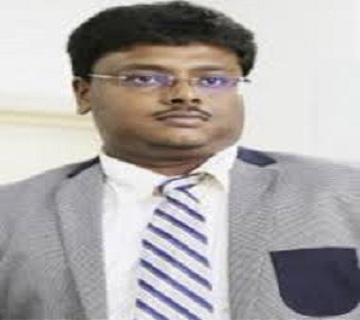Scientific Program

Kaushik Pal
Bharath University, India
Title: Liquid crystals nanoscience in golden oppurtinities for novel switching
Biography:
Kaushik Pal was born in India. He received his Ph.D. from University of Kalyani, Nadia, (India). Most significant prestigious awards “Marie-Curie Experienced Researcher (Postdoctoral Fellowship)” offered by the European Commission at Aristotle University of Thessaloniki, Greece and “Brain Korea National Research Foundation Visiting Scientist Fellowship” at CNU, South Korea, achieved in his career. He was appointed “Senior Postdoctoral Fellow” at Wuhan University in China and after he obtained the most prestigious position “Scientist & Faculty CAS Fellow” by Chinese Academy of Science. Most recent, he has been working as a “Research Professor & (Independent Scientist)”, at the Department of Nanotechnology, Bharath University (BIHER) at Chennai. Based on his research background he selected “Editor-in-Chief” of the International peer reviewed journals and publishers ‘Pan-Standford’, En Press, and ‘InTech’ as well as edited significant numbers of the book chapters, partially reviewed 85-research articles. Prof. Pal is an excellent group leader as well as associate member in various scientific communities, reorganizations and professional bodies. Since last year organized and chairperson around 12-National/ International events/ symposiums/ conferences/workshops and himself contributed around 8-Keynote & 25-Invited lectures and attained distinguish chief guest in worldwide Nanoscience research community.
Abstract
Liquid crystal (LC) has long been a feature in Materials Science and Nanotechnology, have recently been extended into the appealing domain of complex hybrid materials. The crystalline structural effects of alkoxy chain lengths and the mesogen properties of hydrogen-bonded (nOBASA) complexes (n=5,6,7) have been investigated in recent studies. The LC-based hybrid nanocomposite materials –obtained by the homogeneous dispersion of zinc oxide nanowires (ZnO NWs) as a dopant into hydrogen-bonded liquid-crystalline (HBLC) compounds– seem to be particularly promising in this article. Optimizing the geometry of surface stabilizing electrooptic, LC cell reveals the typical intermolecular hydrogen bond (H-bond) formation. Here, we explore molecular-colloidal hybrid composite matrix formed from LCs and dilute dispersions of orientation-ordered ZnO NWs, for eventual potential application in smart switchable display devices. In addition, we investigated the structural, dielectric and optical properties of the nanocomposite, and electro-optical studies which were performed by exploiting the potential during the conditions before the opening of spectrum acquisition. Our novel findings confirm that the electric field induces a charge transfer of the LC molecules to the nanomaterial, which acts as a trap for ionic charges. This effect may be utilized to achieve switching that is electro optically tunable. Such dynamic switching could be harnessed in smart LCD technology and pave the way towards innovative display modulation technology.
- Material Chemistry and Development
- Material Characterization
- Energy Materials
- Biomaterials
- Nanomaterials
- Ceramic and Composite Materials
- Materials in Industry and Information Technology
- Defence and Aerospace Materials
- Computational Material Chemistry and Science
- Imaging of Materials
- Future scope of Material Chemistry

